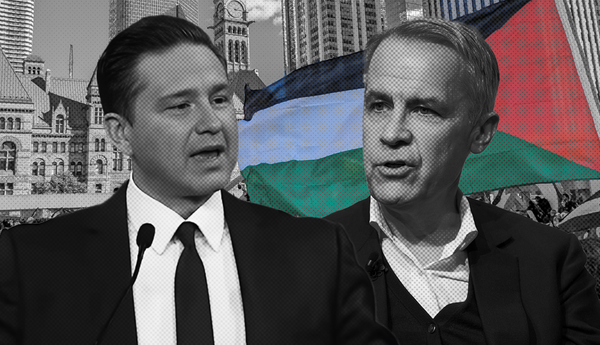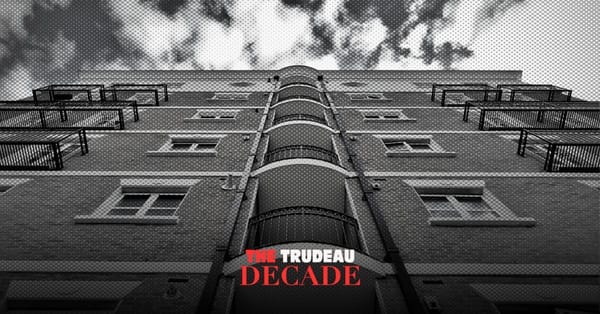How do you solve a problem like the drug poisoning crisis? If you’re a conservative in Alberta, the answer is apparently to ignore it.
A July 12 report from Statistics Canada recorded worrying rises in excess deaths throughout the country between January 2020 and this April. StatCan estimated that 920 Albertans died of accidental poisonings in 2020 (which includes drug-related deaths); the province’s own data says 1,144 died from opioid-related poisonings. And those figures are only getting worse: Between January and April, 488 people died — a 60.5 per cent increase from the 2020 numbers.
With the toxicity crisis spiralling out of control, you’d think Alberta might look to other jurisdictions battling the same problems — like British Columbia, which declared a state of emergency in 2016 and has been (slowly) opening more safe consumption sites, promising safe supply and advocating for decriminalization.
Alberta Premier Jason Kenney’s United Conservative Party (UCP) has done the opposite. They’ve been closing supervised consumption sites, touting addiction recovery as more important than safe drug use and attacking B.C.’s policies as left-wing hooey.
None of these policies are helping people who use drugs. While the UCP treats the poisoned drug crisis as a chance to pander to their base, people are dying.
Closing Safe Consumption Sites
Lethbridge was home to the busiest supervised consumption site (SCS) in North America, ARCHES, which averaged 663 visits per day for a city of around 100,000 people. After an audit suggested it mismanaged public funds, the province closed it in August 2020.
“In any other service facility, they would not shut down the services,” said Lori Hatfield, an advocate with Moms Stop The Harm, at the time. “The government would be putting in other management.”
Alberta replaced the consumption site with a mobile overdose prevention site — smaller, temporary and closed between 4 a.m. and 8 a.m. While the government claimed it would have sufficient capacity, harm reduction workers in the city didn’t agree. Former ARCHES employees working for the newly formed Lethbridge Overdose Prevention Society erected a tent in a downtown park, and have been operating an unlicensed consumption site since.
The city has issued them multiple tickets, more concerned with unauthorized tents than drug toxicity deaths. Almost a year later, illicit drug use rates in Lethbridge remain high.
Lehtbridge isn’t the only city that’s seen safe consumption sites close due to the UCP’s whims.
In Edmonton, the Boyle Street Community Services SCS moved in October 2020 to a temporary shelter. When the shelter closed in April, Boyle Street shut down permanently with it, reducing the city’s total capacity, and giving people who use drugs fewer options.
In Calgary, the provincial government decided to close the lone safe consumption site, Safeworks, and replace it with two other locations. There have been no details on what these sites will look like. “To harm reduction advocates […] the demise of Safeworks is another nail in the coffin for services that are badly needed,” summarized Hamdi Issawi in The Sprawl.
Despite evidence that supervised consumption sites are among the best ways to prevent deaths, the UCP has spent the last year battling to shut them down. Now, drug users in the province have fewer places to safely consume substances — even as more are dying.
And new regulations on safe consumption sites means that it’s going to be harder for them to gain licenses. Requirements, as reported by CTV, include data collection, staff qualifications, washrooms on-site, addiction referral information and “ensuring the safety of clients, employees, and the local community.”
That last one is important, as mental health and addictions press secretary Justin Marshall tried to justify Safeworks’ closure by claiming it was “highly disruptive to the neighbourhood.” And before the Boyle Street site in Edmonton closed, some businesses blamed the safe consumption sites for higher crime levels. In short, the UCP is prioritizing perceived harm to businesses over real harm reduction to people who use drugs.
Codifying requirements for these sites — and shutting down ones that don’t comply — means the people who need these services will be less able to access them.
Recovery Over Survival
Alberta has taken an anti-science approach to both the COVID-19 crisis and the poisoned drug epidemic. In both cases, “recovery” has trumped survival. In the pandemic, Kenney has pushed for an economic recovery, while in drug policy, Mental Health and Addictions Minister Jason Luan has positioned addiction recovery as fundamentally opposed to safe use.
In both cases, the government seems not to care that the policy could lead to suffering and death. It’s pretty hard for the economy to “recover,” or for folks who use drugs to “recover,” if those same people are dead.
After Alberta conducted a biased review of safe consumption sites in 2019, they decided to change their entire drug toxicity crisis response. In the ensuing report, Luan pointed toward “the near-absence of referrals to treatment and recovery” as a huge issue that the UCP would work to repair. This is why Alberta safe consumption sites now have to include explicit addiction referrals.
But using safe substance sites is already correlated with accessing recovery services; studies suggest anywhere from 16 per cent to 57 per cent of clients enter addiction treatment. So, if safe consumption sites already provide a pathway into addiction recovery for people, what sense does it make to close them?
Current Alberta policy means that, according to Luan, “Every service that the government funds, and every operator the government partners with, needs to be focused on supporting recovery.”
This push toward recovery ignores the fact that drug users are, first and foremost, people. They have agency. You can’t force someone into rehab: they have to make that decision for themselves.
There’s also the fact that not everyone will respond well to classic cold-turkey or abstinence-based addiction models, like the ones preached by Narcotics Anonymous. Recovery isn’t a straight path, either: between 40 and 60 per cent of people recovering from addiction will relapse.
Harm reduction services are an important part of recovery, because they give people a better chance of making it through their current hurdles and getting to a point where their recovery is easier. So, the UCP’s unyielding focus on “recovery” ignores the fact that many people who use drugs are, in fact, already in recovery.
Conservative Drug Policy Kills
There isn’t a logical reason behind the UCP’s choices. But there is a political one.
Alberta and B.C. are both facing crushing numbers of poisoned drug deaths: approximately six people per day in B.C., and four in Alberta. B.C. is run by the supposedly progressive NDP — so having a radically different drug policy to them gives the UCP a chance to flex their conservative muscles.
Press Secretary Marshall told CTV, “We understand that some wish to adopt a Vancouver-style social chaos approach, including flooding the streets with taxpayer-funded [OxyContin] style narcotics, but we firmly reject that view.”
Here, “Vancouver” is doing heavy lifting: it’s being held up as something that’s failing, so that the UCP can compare their policy against it. The “approach” he’s disparaging seems to be safe supply, but he ignores that B.C. doesn’t have a strong safe supply system in place. “Vancouver” is used as shorthand for ‘progressive,’ so its failures can be weaponized as an attack against left-wing ideas — even if those failures are in part caused by not being progressive enough.
The problem is not drugs themselves. It is that drugs are being cut with increasingly more toxic substances because they’re not regulated. Users have to get their drugs tested to find out what’s in them — and often, it’s places like SCSs that offer testing services.
While drug-related deaths didn’t start with synthetic opioids, these substances have helped drive the huge spike in fatalities, as it’s harder for people who use drugs to accurately gauge the strength of their dose. Fentanyl has been involved in 86 per cent of Alberta’s illicit drug fatalities so far this year; safe supply would mean that people are using drugs that don’t have fentanyl or carfentanil in them. But this doesn’t fit with the UCP narrative of drugs themselves being deadly.
Alberta’s funding for mental health and addictions will remain at its promised $140 million over four years despite increasing deaths, because the government has decided how much they are willing to spend. This is what thousands of lives are worth to the UCP — and no more.
“The goal here is to save lives,” Luan told the Calgary Herald. But this isn’t true. The goal is to save certain lives — those of people who could kick their habits and one day offer what the UCP would consider to be a contribution to society. If you’re not in a place where recovery is possible, the government couldn’t care less if you live or die.
And let’s not forget that in Alberta, Indigenous people are at least seven times more likely than others to die from poisoned drugs. Access to naloxone is difficult on reserves or in rural and remote communities. Marshall, in response to opposition calls for safe supply, accused the Alberta NDP of wanting to “flood First Nations communities with taxpayer-funded OxyContin-style narcotics.” (Wonder where we’ve heard that before.)
Refusing to spend more money on combating poisoned drugs means refusing to spend money on Indigenous welfare. But given that the UCP have already shown they don’t care about Indigenous people, it’s not surprising — just another piece of evidence to add to the list.
Closing SCSs, pushing for recovery over survival and turning the drug crisis into a political football doesn’t save lives. It ends them.
CORRECTION: This article has been updated to note that Alberta’s government, not the federal government, closed Safeworks. Passage regrets this error.







